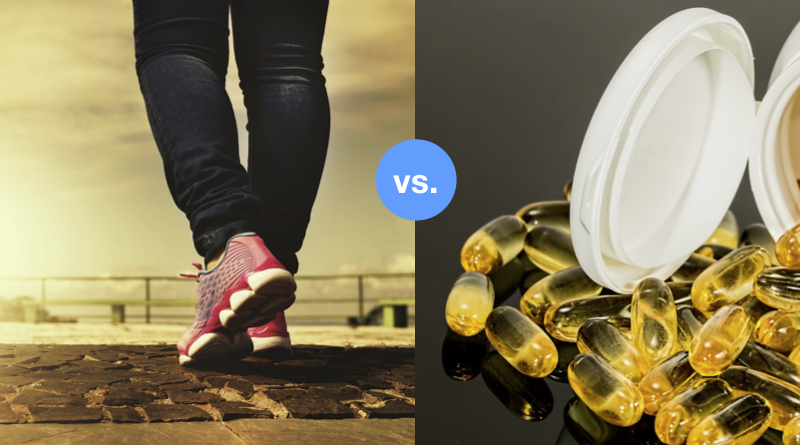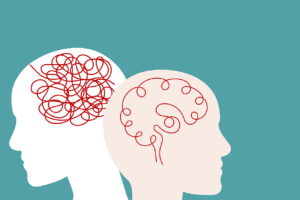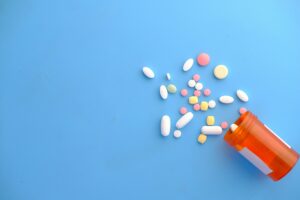
Is exercise or glucosamine better for arthritis?
Are you one of the 27 million Americans with osteoarthritis (OA)? If so, you’re probably familiar with OA pain. OA is the second most expensive condition treated in US hospitals today, and the leading cause of disability. It results from degeneration of cartilage in your joints (hands, neck, lower back, knees, or hips), and this leads to inflammation and—you guessed it—pain.
But Good News…
Currently, there are several surgical and nonsurgical options that may relieve pain associated with OA (5). One very popular non-surgical option is a glucosamine supplement, which you can buy at most grocery stores. Although glucosamine is a naturally occurring chemical in the human body, the supplement form is often harvested from shellfish and is thought to improve joint structure and function by supporting healthy cartilage. Sounds great, right? Well, unfortunately, research on glucosamine is a bit sketchy (as we’ll explain below), so you might want to consider other options too. One alternative approach to relieving OA pain that we will talk about is exercise. This is because exercise can help build muscle to stabilize joints and relieve pain (5).
So, what’s your best bet for easing OA pain? Here, we’ll compare the research on glucosamine and exercise, so that you can decide how to spend your time and money.
A Review of the Evidence
We started by systematically combing through scientific studies on glucosamine, exercise, and OA (see Review Methods at end of article for details). In our review, we generally found that exercises involving less stress on the joints (like yoga and aquatic exercise) were effective for easing knee OA symptoms. For instance, one study found that yoga provided a 35% reduction in OA pain (4). In contrast, a systematic review on glucosamine that covered 5 different trials found no significant improvement in OA pain. But these are just two examples so let’s take a closer look at all of the evidence…
Exercise
We found a total of 12 studies that examined the effects of different forms of exercise on OA symptoms. Here they are:
If you look at the table above, you can see that several studies suggest that aquatic exercises benefits knee OA. For example, in the first trial shown in the table, researchers at the University of Washington randomly assigned people with OA to either a 12-week swimming program or a non-exercise group. They found that the exercise program improved leg muscle strength, joint flexibility, and aerobic fitness. In fact, knee flexion increased by 12% and knee extension increased by 18.5% by the end of the program, and individuals in the exercise group were able to walk 10.9% further than before the trial started. Unfortunately, participants did not report any change in pain level. However, these findings are still big, because a loss of knee extension makes walking more difficult, and exercise treatments that can help with this are relatively inexpensive.
What About Strength Training?
Other studies have focused on strength training and stretching exercises to improve OA symptoms. One well conducted, randomize and controlled study (second row in the table above) compared both strength training exercises and yoga in 83 adults with OA and an average age of 71 (4). This study involved 8 weeks of weekly training sessions for both groups along with several at-home practice sessions. After the intervention, subjects in the yoga group had less knee pain and less fear of falling compared to subjects in the strength training group. Additionally, the subjects in the yoga group had better joint function and 36% less pain and stiffness as compared to subjects in the strength training group. We should say that both groups saw some improvement in OA symptoms, but this shows that stretching exercises like yoga may be better than strength training in older adults with knee OA.
What about Glucosamine?
We found a whopping 19 trials on glucosamine (people really like this stuff!). Here they are:
If you look at that table above, you’ll notice a fairly different trend compared to exercise.Some evidence does show that glucosamine may alleviate joint pain and stiffness associated with OA, but 75% of the studies we focused on suggest it may not do much. In fact, in a recent review analyzing multiple studies on the same topic, researchers also wanted to know whether or not glucosamine supplementation improves symptoms in individuals with knee OA (18). They analyzed five trials that included 1,625 individuals with knee or hip OA and found no significant benefits of glucosamine supplementation over a placebo (sugar pill). All of these studies included trials that were well-controlled and randomized, suggesting that glucosamine may not be beneficial for OA after all.
Exercise vs Glucosamine: Which is better?
From the data we showed you above, it might be obvious by now, but we can also look at this even more scientifically. In the figure below, we’ve compiled and calculated the effects of either exercise or glucosamine on OA pain from the data in all of the trials we found.
Pain from each study we looked at was determined by calculating the percent change in pain from baseline and after the intervention. A negative percent change indicates a decrease in pain after the intervention, where as a positive percent change indicates an increase in pain. As you can see, the evidence shows that exercise provides more pain relief than glucosamine. In fact, of the 12 trials on exercise we reviewed, 11 of them showed that exercise reduced pain levels by an average of 20-30%. Conversely, of the 19 trials on glucosamine, only 5 of them showed decreased pain ratings with glucosamine supplements in individuals with knee OA. Out of these 5 positive glucosamine trials, only 2 documented significant decreases in pain, and even these two trials showed very small improvements in pain compared to the exercise studies. So, overall this evidence suggests that exercise really may be the best option for reducing OA symptoms.
OK, So Which Exercise Is Best?
As for which exercise is the most effective for OA, the data is still conflicting. When people have compared high intensity exercises (like weight training or intervals) to low intensity exercises (like yoga or swimming), they’ve found that both reduce some symptoms of OA. For example, aquatic exercise trials (See 1, 17, and 18 in Figure 1) were not found to improve pain, but did improve other aspects such as flexibility, strength, and fitness. Therefore, the evidence implies that any exercise at all may improve quality of life for people with OA. Still, our research points to the idea that low impact exercise may be the most effective at reducing overall pain in older adults. And, there’s at least some evidence that vigorous exercise and weight training may do more harm than good.
Our Final Say
In any case, if you’re spending money on glucosamine for OA, it might be time to trade in your supplements for a pool noodle or elliptical. A majority of the glucosamine trials we studied found no effect on pain and mobility. Talk to your doctor, of course, but the science points to the idea that low impact exercise (water aerobics, yoga, etc.) outperforms glucosamine for treatment of OA.
ABOUT THE AUTHORS
Katie Higgins, Meredith Krautler-Klemme, and Kayla Woodward are students in the Integrative Physiology Department at the University of Colorado Boulder. This paper was reviewed by scientists at CU Boulder.
Review Methods
To find an accurate answer to our question, the authors went to PubMed (like Google for biomedical papers) in search of quality scientific papers written on the subject. They first searched PubMed with terms of “knee osteoarthritis”, “exercise”, “training”, “aerobic”, “resistance”, “aquatic” and “cycling”. They then ran a second search with the terms “knee osteoarthritis” and “glucosamine”. They specific terms for the first search were: “knee osteoarthritis AND (exercise OR training) AND (aerobic OR resistance OR aquatic OR cycling) NOT (arthroplasty AND surgical AND surgery) AND pain”. For the second search, they used: “knee osteoarthritis AND glucosamine NOT (arthroplasty AND surgical or surgery) AND pain AND trial”. The authors limited their search to randomized controlled trials (a study that randomly assigns subjects to either an experimental group or a control group to reduce bias). From these search results they excluded any studies with non-healthy individuals who have had an arthroplasty (knee surgery) or were obese. Finally, they further narrowed the glucosamine search results by only including trials that had a placebo to truly assess its effectiveness.
References
- Wang, Tsae Jyy, et al. “Effects of aquatic exercise on flexibility, strength and aerobic fitness in adults with osteoarthritis of the hip or knee.” Journal of advanced nursing 57.2 (2007): 141-152.
- Bartels, Else Marie, et al. “Aquatic exercise for the treatment of knee and hip osteoarthritis.”The Cochrane Library (2016).
- Chang, Ting-Fang, et al. “Effects of elastic-band exercise on lower-extremity function among female patients with osteoarthritis of the knee.” Disability and rehabilitation 34.20 (2012): 1727-1735.
- Cheung, Corjena, et al. “Managing knee osteoarthritis with yoga or aerobic/strengthening exercise programs in older adults: a pilot randomized controlled trial.” Rheumatology international 37.3 (2017): 389-398.
- Hussain, S. M., et al. “Knee osteoarthritis: a review of management options.” Scottish medical journal 61.1 ( 2016): 7-16.
- Sayers, Stephen P., Kyle Gibson, and Cristi R. Cook. “Effect of high speed power training on muscle performance, function, and pain in older adults with knee osteoarthritis: A pilot investigation.” Arthritis care & research 64.1 (2012): 46-53
- Debi, R., et al. “GAG for osteoarthritis of the knee–a prospective study.” Harefuah138.6 (2000): 451-3.
- Salacinski, Amanda J., et al. “The effects of group cycling on gait and pain-related disability in individuals with mild-to-moderate knee osteoarthritis: a randomized controlled trial.” journal of orthopedic & sports physical therapy 42.12 (2012): 985-995.
- Ettinger, Walter H., et al. “A randomized trial comparing aerobic exercise and resistance exercise with a health education program in older adults with knee osteoarthritis: the Fitness Arthritis and Seniors Trial (FAST).” Jama 277.1 (1997): 25-31.
- Houpt, J. B., et al. “Effect of glucosamine hydrochloride in the treatment of pain of osteoarthritis of the knee.” The Journal of rheumatology 26.11 (1999): 2423-2430.
- Wang, Tsae Jyy, et al. “Comparing the efficacy of aquatic exercises and landbased exercises for patients with knee osteoarthritis.” Journal of clinical nursing 20.1718 (2011): 2609-2622.
- Jan, Mei-Hwa, et al. “Investigation of clinical effects of high-and low-resistance training for patients with knee osteoarthritis: a randomized controlled trial.” Physical therapy 88.4 (2008): 427-436.
- Reichelt, A., et al. “Efficacy and safety of intramuscular glucosamine sulfate in osteoarthritis of the knee. A randomised, placebo-controlled, double-blind study.” Arzneimittel-Forschung44.1 (1994): 75-80.
- Gür, Hakan, et al. “Concentric versus combined concentric-eccentric isokinetic training: effects on functional capacity and symptoms in patients with osteoarthrosis of the knee.” Archives of physical medicine and rehabilitation 83.3 (2002): 308-316.
- Mangione, Kathleen Kline, et al. “The effects of high-intensity and low-intensity cycle ergometry in older adults with knee osteoarthritis.” Journals of Gerontology Series A: Biomedical Sciences and Medical Sciences 54.4 (1999): M184-M190.
- Rindone, Joseph P., et al. “Randomized, controlled trial of glucosamine for treating osteoarthritis of the knee.” Western Journal of Medicine 172.2 (2000): 91.
- Lund, Hans, et al. “A randomized controlled trial of aquatic and land-based exercise in patients with knee osteoarthritis.” Journal of rehabilitation medicine 40.2 (2008): 137-144.
- Runhaar, Jos, et al. “Subgroup analyses of the effectiveness of oral glucosamine for knee and hip osteoarthritis: a systematic review and individual patient data meta-analysis from the OA trial bank.” Annals of the rheumatic diseases (2017): annrheumdis-2017.
- Armagan, Onur, et al. “Comparison of the symptomatic and chondroprotective effects of glucosamine sulphate and exercise treatments in patients with knee osteoarthritis.” Journal of back and musculoskeletal rehabilitation 28.2 (2015): 287-293.
- Roman‐Blas, Jorge A., et al. “Combined Treatment with Chondroitin Sulfate and Glucosamine Sulfate Shows No Superiority over Placebo for Reduction of Joint Pain and Functional Impairment in Patients with Knee Osteoarthritis: A Six Month Multicenter, Randomized, Double‐Blind, Placebo‐Controlled Clinical Trial.” Arthritis & Rheumatology 69.1 (2017): 77-85.
- Sterzi, Silvia, et al. “The efficacy and safety of a combination of glucosamine hydrochloride, chondroitin sulfate and bio-curcumin with exercise in the treatment of knee osteoarthritis: a randomized, double-blind, placebo-controlled study.” European journal of physical and rehabilitation medicine 52.3 (2016): 321-330.
- Kanzaki, Noriyuki, et al. “Glucosamine-containing supplement improves locomotor functions in subjects with knee pain: a randomized, double-blind, placebo-controlled study.” Clinical interventions in aging 10 (2015): 1743.
- Hochberg, Marc C., et al. “Combined chondroitin sulfate and glucosamine for painful knee osteoarthritis: a multicentre, randomised, double-blind, non-inferiority trial versus celecoxib.” Annals of the rheumatic diseases(2015): annrheumdis-2014.
- Runhaar, Jos, et al. “Subgroup analyses of the effectiveness of oral glucosamine for knee and hip osteoarthritis: a systematic review and individual patient data meta-analysis from the OA trial bank.”
- Kwoh, C. Kent, et al. “Effect of Oral Glucosamine on Joint Structure in Individuals with Chronic Knee Pain: A Randomized, Placebo‐Controlled Clinical Trial.” Arthritis & rheumatology 66.4 (2014): 930-939.
- Fransen, Marlene, et al. “Glucosamine and chondroitin for knee osteoarthritis: a double-blind randomized placebo-controlled clinical trial evaluating single and combination regimens.” Annals of the rheumatic diseases 74.5 (2015): 851-858.
- Rozendaal, R. M., et al. “Effect of glucosamine sulphate on joint space narrowing, pain and function in patients with hip osteoarthritis; subgroup analyses of a randomized controlled trial.” Osteoarthritis and Cartilage 17.4 (2009): 427-432.
- Messier, S. P., et al. “Glucosamine/chondroitin combined with exercise for the treatment of knee osteoarthritis: a preliminary study.” Osteoarthritis and cartilage 15.11 (2007): 1256-1266.
- McAlindon, Timothy, et al. “Effectiveness of glucosamine for symptoms of knee osteoarthritis: results from an internet-based randomized double-blind controlled trial.” The American journal of medicine117.9 (2004): 643-649.
- Cibere, Jolanda, et al. “Randomized, double‐blind, placebo‐controlled glucosamine discontinuation trial in knee osteoarthritis.” Arthritis Care & Research 51.5 (2004): 738-745.
- Braham, R., B. Dawson, and C. Goodman. “The effect of glucosamine supplementation on people experiencing regular knee pain.” British journal of sports medicine 37.1 (2003): 45-49.
- Pavelká, Karel, et al. “Glucosamine sulfate use and delay of progression of knee osteoarthritis: a 3-year, randomized, placebo-controlled, double-blind study.” Archives of internal medicine 162.18 (2002): 2113-2123.
- Tsuji, Taishi, et al. “Effects of N-acetyl glucosamine and chondroitin sulfate supplementation on knee pain and self-reported knee function in middle-aged and older Japanese adults: a randomized, double-blind, placebo-controlled trial.” Aging clinical and experimental research 28.2 (2016): 197-205.





